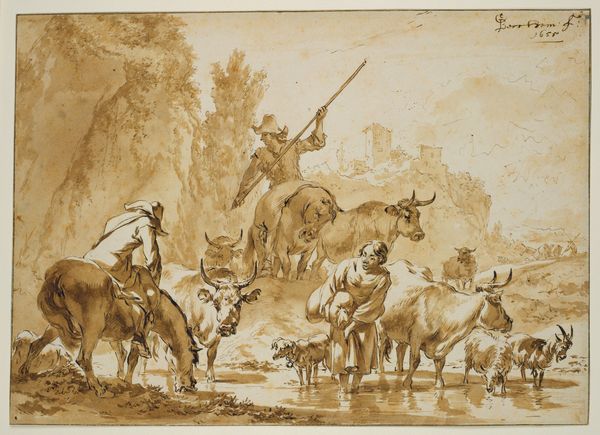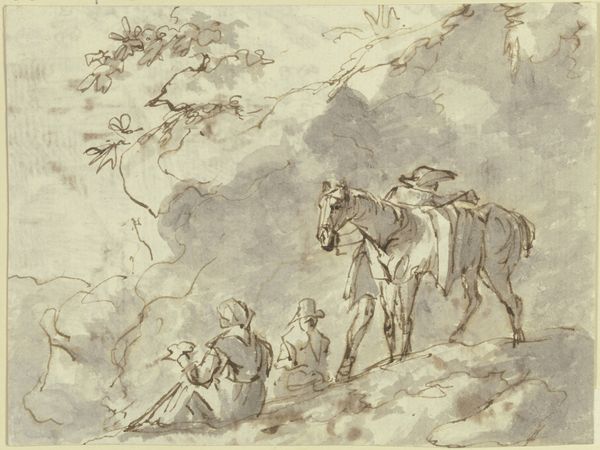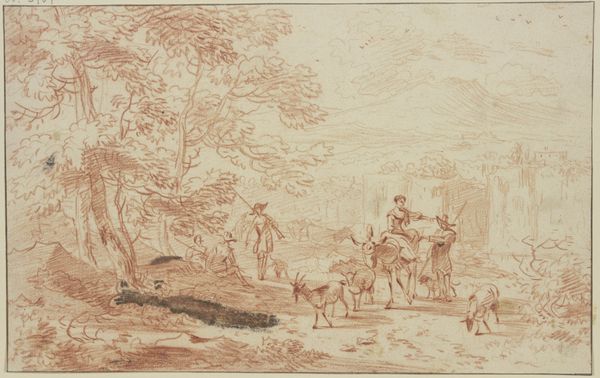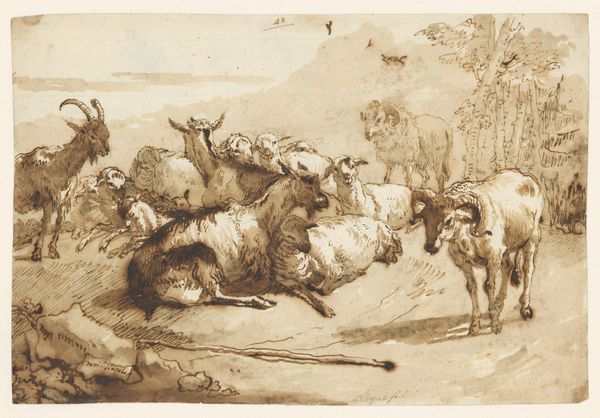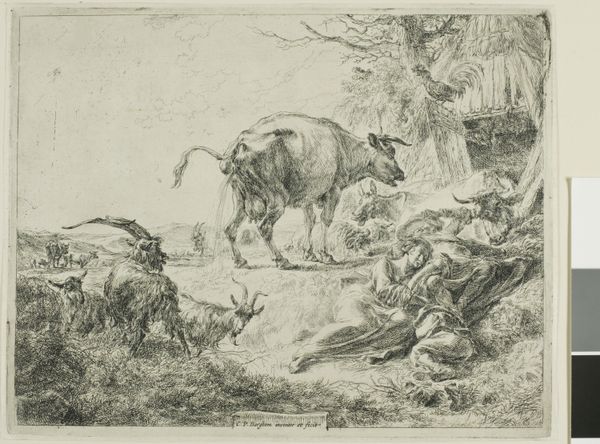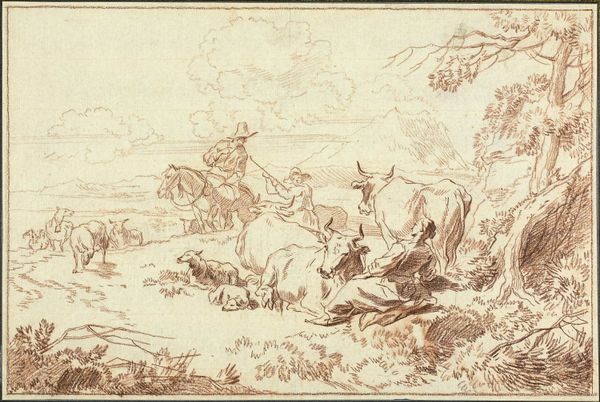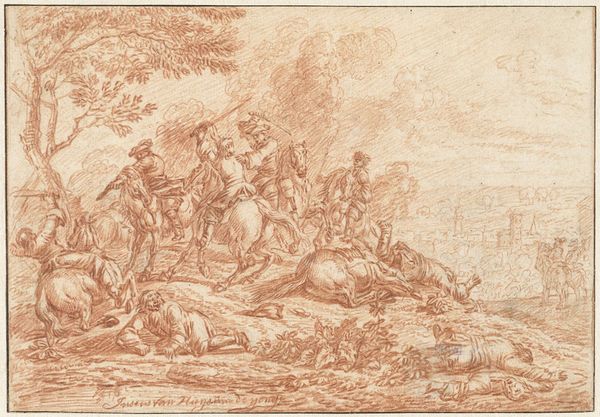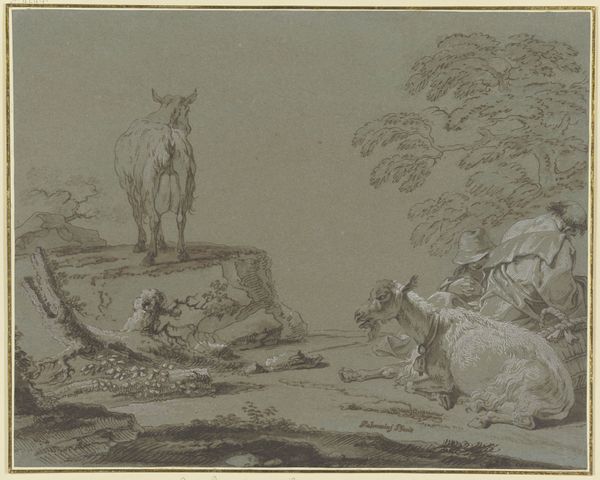
drawing, print, paper, ink, chalk
#
drawing
#
ink painting
# print
#
landscape
#
figuration
#
paper
#
ink
#
chalk
#
genre-painting
#
realism
Dimensions: 297 × 405 mm
Copyright: Public Domain
Curator: Right, let’s discuss this undated drawing, "Herdsmen with Cattle and Sheep," attributed to a Follower of Claes Pietersz. Berchem, held here at the Art Institute of Chicago. The artwork employs ink and chalk on paper. What's your first impression? Editor: My initial reaction is one of weary resignation. There's a palpable sense of fatigue radiating from the herdsman slumped on the back of the animal. The droopy, brown ink feels symbolic of exhaustion to me. Curator: Yes, and considering it’s executed in ink and chalk, with an emphasis on line and wash, it begs questions about its function. Was it a preparatory sketch? A finished piece for sale? How does this affect its value and accessibility at the time of production? Editor: The social context of pastoral scenes like this is crucial. While it appears to depict a simple, idyllic rural life, such depictions were often consumed by a wealthy urban class, eager to romanticize and distance themselves from the realities of agricultural labor and wealth disparity. There’s something exploitative in that transaction. Curator: I agree, and we also have to consider the cost and accessibility of the materials involved. The quality of the paper, the type of ink, these elements speak to the artist's position within a specific economy. Was this affordable to the everyday artisan? How did such economic factors impact artistic training and apprenticeships at that time? Editor: Furthermore, let's consider the historical dynamics embedded within representations of human-animal relationships. Who owns the livestock? How does that reflect power structures in a patriarchal, agrarian society? The passivity of the animals almost reflects their subordination. Curator: Right, ownership of animals also translates to material resources – milk, wool, labor – forming a foundational element of early economies. Also the drawing shows us that at the point of creation of this piece of art, animals were used for labor, for food, for clothing. Editor: Precisely! I think by unpacking this artwork and understanding the historical context, power relations, and material circumstances that constitute these figures, we unveil a more layered, meaningful story. Curator: Indeed. By analyzing the art through the lens of its creation, its material reality, and labor relations, we move away from a purely aesthetic appreciation and instead reveal its economic, cultural, and social footprint. It is an enlightening look into past economic structures, and how that influences contemporary life.
Comments
No comments
Be the first to comment and join the conversation on the ultimate creative platform.


